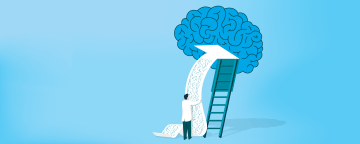Bob Grant in The Scientist:
 The most exciting thing about science is that it can ferry humanity into the unknown. The scientific method, as a mode of observation piloted by humans for generations, has probed outer space, the depths of the oceans, and the inner reaches of cells, molecules, and atoms—our amazing brains at the helm. Never satisfied, the three-pound, skull-encased lump of flesh strains to know more, discover more, solve more. And the universe obliges. Unimaginably vast swaths of space lie unexplored; most of the ocean floor remains a mystery; and new insights into the functioning of cells and the nature of subatomic matter emerge on an almost daily basis.
The most exciting thing about science is that it can ferry humanity into the unknown. The scientific method, as a mode of observation piloted by humans for generations, has probed outer space, the depths of the oceans, and the inner reaches of cells, molecules, and atoms—our amazing brains at the helm. Never satisfied, the three-pound, skull-encased lump of flesh strains to know more, discover more, solve more. And the universe obliges. Unimaginably vast swaths of space lie unexplored; most of the ocean floor remains a mystery; and new insights into the functioning of cells and the nature of subatomic matter emerge on an almost daily basis.
This almost unfathomable potential for discovery and innovation always rockets to the fore of my own three-pound fleshlump when it comes time to edit our annual issue on neuroscience. Most scientists and science enthusiasts I’ve met are intellectually inflamed by the fact that there is so much out there (and in here) that we don’t know—a passion that transcends disciplines. And is there any mystery more fascinating than the functioning of the human brain itself? After all, we carry our brains around with us every day and use them to ferret out the patterns and meanings that throng around us. Neuroscientists, even more than the rest of us, use theirs to think about thinking.
Yet, after millennia of intimate interactions with our own brains and decades of formal study of the organ, “how the brain works was and still is a complete mystery,” in the words of Albert Einstein College of Medicine neuroscientist Kamran Khodakhah, this month’s profilee. How in the name of Ramón y Cajal can cells, amassed in tangled networks and swapping ions across their membranes to propagate waves of electrical potential, result in a thought? How does this sequence of physical events form moving pictures, symphonies, emotions, and inspiration? It truly boggles . . . well, the brain.
More here.
